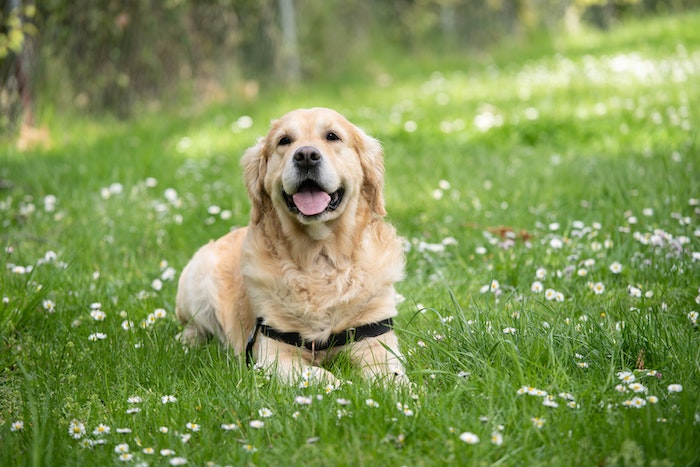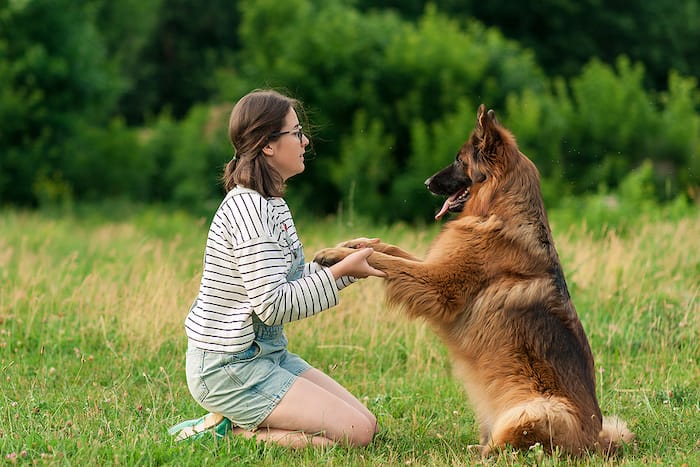You come home after a long day, expecting a warm welcome from your furry friend. Instead, you’re greeted with a torn-up couch, scattered trash, and a guilty-looking dog. Sound familiar? Many dog owners face these challenges daily, wondering where they went wrong.
Setting boundaries isn’t just about preventing mischievous behavior; it’s about creating a harmonious living environment for both you and your pet. Dive into this guide to discover the secrets to setting effective boundaries and nurturing a perfectly well-behaved dog.
Dogs, by nature, are pack animals. This means they thrive in a structured environment where there’s a clear leader. When you set boundaries, you’re essentially taking on the role of the pack leader. This not only provides your dog with a sense of security but also ensures they know their place in the household hierarchy.
Communication isn’t just about barking or wagging tails. The experts at Southend Dog Training say that dogs convey a lot through their body language. By understanding these subtle cues, you can better set and enforce boundaries. For instance, a lowered head might indicate submission, while raised hackles could signal discomfort or aggression.

Starting Early: The Puppy Phase
The puppy phase is a crucial time for setting boundaries. Puppies are like sponges, eager to learn and adapt. Introducing them to basic commands like “Sit,” “Stay,” and “Come” during this phase can set the foundation for a well-behaved adult dog.
It’s essential to be consistent with your rules from the get-go. If you allow your puppy on the couch one day but scold them the next, it sends mixed signals. Make sure everyone in the household is on the same page regarding the dos and don’ts for your pup.
The Power of Positive Reinforcement
Positive reinforcement is all about rewarding good behavior. This can be through treats, praises, or even a simple pat on the head. When your dog associates good behavior with rewards, they’re more likely to repeat it.
Scolding or punishing your dog can have negative effects. Instead of understanding what they did wrong, they might associate the punishment with you, leading to fear or aggression. It’s always better to redirect unwanted behavior rather than punish.
Setting Physical Boundaries
Baby gates and playpens aren’t just for human babies. They can be instrumental in demarcating areas where your dog can and cannot go. This is especially useful if you have areas in your home with fragile items or places you’d like to keep pet-free.
If you prefer your dog not to jump on certain furniture or enter specific rooms, it’s essential to establish these boundaries early on. Similarly, when outdoors, teaching them the limits of where they can roam can prevent potential mishaps.
Social Boundaries: Playtime and Beyond
Dogs are social creatures, but introductions need to be handled with care. Whether it’s a new family member or another pet, gradual introductions in a neutral environment can help ease any potential tensions.
Dogs love to play, but it’s crucial that this playtime doesn’t turn aggressive. Teaching them commands like “Leave it” or “Gentle” can help them to play nicely with both humans and other animals.

Consistency is Key
Dogs thrive on consistency. If one day they’re allowed to do something and the next day they’re not, it can be confusing for them. Make sure all family members are consistent with the rules and boundaries set for your dog.
Even well-trained dogs can benefit from occasional training refreshers. This ensures they remember the rules and helps reinforce good behavior.
Dealing with Setbacks
No dog is perfect, and there will be times when they test boundaries or forget the rules. Instead of getting frustrated, it’s essential to approach these situations with patience and understanding.
If a particular training method isn’t working, it might be time to try something new. Dogs, like humans, are individuals, and what works for one might not work for another. Be open to adjusting your strategies as needed.
Celebrating Successes
Every time your dog follows a command or respects a boundary, it’s a win. Celebrate these small victories, as they pave the way for a well-behaved dog.
A well-behaved dog isn’t just about having a pet that listens. It’s about building a bond of trust and mutual respect, which enhances the joy of companionship.
The Role of Toys and Distractions
Dogs, especially when young or particularly active breeds, need mental stimulation. Interactive toys can be a great way to challenge them mentally and keep them occupied, reducing the chances of them seeking out mischief.
Chewing is a natural behavior for dogs. Providing them with appropriate chew toys can not only save your furniture but also help in dental health and reduce anxiety.
The Importance of Exercise in Behavior Management
A tired dog is a well-behaved dog. Regular walks and play sessions can help burn off excess energy, making your dog more relaxed and less likely to indulge in destructive behaviors.
Dog parks offer a great environment for dogs to socialize and play in a controlled setting. It’s also an excellent opportunity for them to learn social boundaries with other dogs.
Seeking Professional Help When Needed
If you’re struggling with setting boundaries or facing behavioral challenges, consider enrolling your dog in a training class. These classes offer structured environments where dogs can learn basic commands and proper behavior.
For more severe behavioral issues, a dog behaviorist can provide specialized strategies and insights tailored to your dog’s specific needs.
A Journey of Mutual Respect
Setting boundaries for your dog goes beyond mere rules and discipline. It’s about understanding their innate behaviors, catering to their needs, and fostering a bond that’s built on trust and understanding.
When we set clear boundaries, we’re not restricting our dogs but rather guiding them toward behaviors that ensure their safety and well-being. This, in turn, creates a harmonious living environment where both you and your furry friend can thrive.
Remember, every dog is unique, and patience is key. It’s a journey filled with small victories, occasional setbacks, and countless moments of joy. By being consistent, understanding, and proactive, you’re not just training a dog; you’re building a lifelong partnership filled with mutual respect and love.
So, don’t wait. Embark on this rewarding journey with your canine companion by implementing these tips today!
